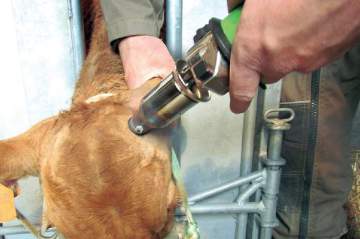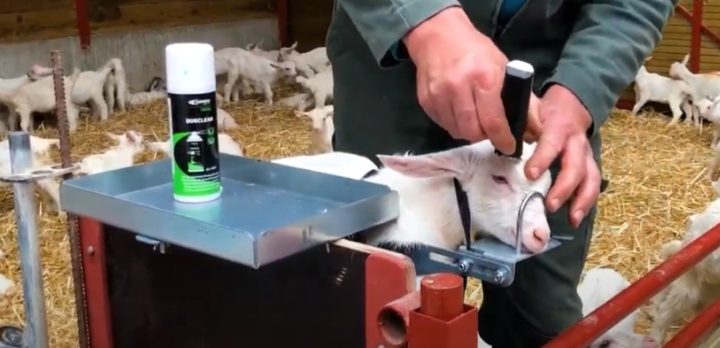
The dehorning of calves is a procedure that must be carried out before the age of 2 months, in order to avoid any health risk and to guarantee the animal’s well-being. The way a calf is restrained is the other factor that determines whether the operation is carried out in the best conditions.
Reasons for dehorning calves
The dehorning of the calf has several objectives:
- limit competition between animals as they grow;
- prevent entanglement in the feed fence;
- avoid injuries between animals, especially in the barn;
- to facilitate the movements and manipulations;
- to protect the breeder from voluntary or involuntary horn blows.
Why must dehorning be done before the age of 2 months?
Dehorning is actually the removal of the horn from the calf, because before the age of two months, the animal has a horn bud that has not yet fused to the skull bone. It is mobile (also called floating) and easy to contain to avoid its development. The operation is therefore hardly intrusive and, thanks to the use of anesthetics, it is virtually painless.
After the age of two months, the transformation of the cornucopia into horn involves the fusion with the frontal sinuses. Dehorning then becomes extremely painful, but also dangerous for the calf, because a communication channel remains open, directly linked to its cranium, and therefore its brain, which generates extreme health risks.
Conditions for ethical dehorning
Today, breeders have the necessary tools to proceed to the dehorning of the calf in good conditions, without affecting the well-being of the animal during, but also after the operation.
Electric or gas dehorning instead of chemical dehorning
The electric or gas dehorner is the only recommended tool. Chemical dehorning is indeed possible, but it has two major drawbacks:
- The animal must endure a substance that burns for several days, which is painful, despite the anesthetics. Electric dehorning takes less than 10 seconds;
- By rubbing against its mother, other cattle or a structure, it spreads the corrosive paste that will burn other animals.
Pain management
Electric or gas dehorning consists of burning the tissue around the horn. Vascularization is thus prevented and the horn cannot develop and fuse to the skull. The operation lasts less than ten seconds, but causes a burn whose pain must be anticipated, thanks to a local anesthetic. It can be administered by injection or by applying a cream. A disinfectant should be applied immediately after dehorning. It is recommended to place the treatment – spray or cream – in the refrigerator so that the animal benefits from the analgesic properties of cold.
Since the sensations of a burn are long-lasting, the calf must be monitored for several days during which an analgesic cream, as well as anti-inflammatory injections, are used to relieve the calf of any pain. It is also an opportunity to ensure that the healing process is taking place in good conditions, without risk of infection.
The electric or gas debarker
The debarker can be operated with gas or electric power. The gas cartridge allows for more freedom, especially when operating directly in the pasture. You can also use a cart to carry a gas cylinder with a longer range. The electric one requires a power supply nearby.
The results are instantaneous and require only one intervention. To better direct the barker, the area should be mowed beforehand. You must use a tip of adapted size to go around the cornual bud.
Finally, in order for dehorning to take place in the best conditions, the calf must be completely immobilized. The restraining cage is the most effective solution.





